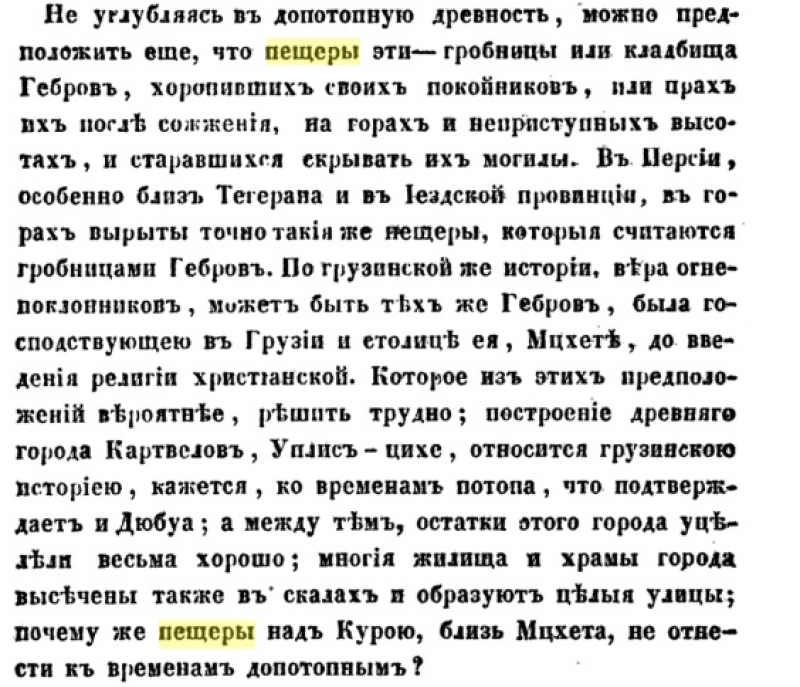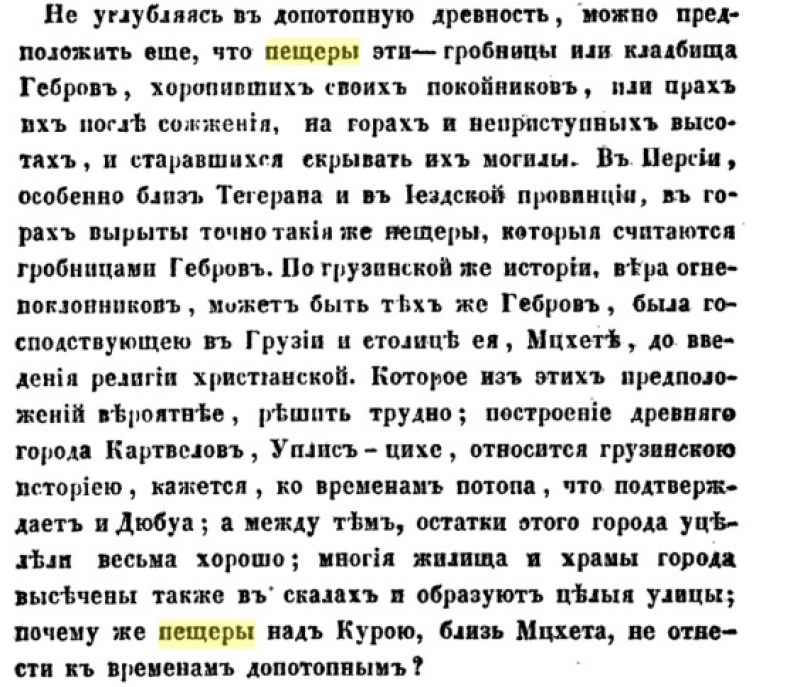
First ever in the post-Soviet history the situation around David Garedja has become highly conflictive by spring 2019. The situation turned into open actions of protest by Georgian nationalists who advanced Georgia"s claims to the complex. Georgia and Azerbaijan found themselves in a state of open conflict and, hence, new confrontation in South Caucasus. Note that open enmity of a part of Georgian society against its neighbor proved to be utterly challenging for politicians of both countries in terms of allied relations that underwent severe trials, including the August war of Russia against Georgia. What we have now is activities of the governments of the two countries aimed at forming delimitation commissions and thus easing intensity of emotions.
Pressing the point of complex"s affiliation to Georgia, the Georgian party puts forward arguments as follows:
- The complex has historically been created by the Georgian Orthodox church.
- The complex is not a monument of Caucasian Albania - as successors to Caucasian Albania, Azerbaijanis groundlessly claim.
- Azerbaijanis have no relation to the monument, since they are strangers in Caucasus.
The history is a sensitive matter, yet, it is actively used as a basis for claims of Georgian nationalists to David Garedja. There are no other arguments and claims.
Proving ground
July 1978. Artillery proving ground Karayazy. Following a monthly target practice we, artillerymen, we were charged with combing the area to deal an artillery blow for shell disposal. Our company bore on. We were moving across burnt lowland arranging hand flags at unexploded ordinances. A mountain range with square eye-pits on a calciferous mountain face appeared in the distance. We approached the mountain face and revealed that eye-pits were manmade and located at a height of 20 meters. It occurred to me that people who lived here in the days of old availed of these dwelling sites as natural ground cover against possible enemies. This was borne out by a fortified structure (a sort of small outpost) higher on the mountain. It was an altitude with an imbedded watchtower and a shield wall. To get to the most fortified part of the outpost, one must needle through a narrow stairwell inside a rock. Just one person could climb through the hole, so attackers were at loss to get inside. There was a chapel on the outpost, 15 sq. m. Images of Christian saints were engraved on walls. At the same time there were fresh footprints of flocks and herds on a loamy soil. This goes to prove that in bad weather the herdsmen sheltered here together with a flock. There was every indication that the ancients left the place long before the place became a proving ground. I came to this conclusion after I made certain that an outpost"s well was as dried as riverbeds. In other words, the ancients abandoned the outpost as soon as the well stopped of its own accord.
It is worth pointing out that Azerbaijanis call the complex of caves and towers in the region of David Garedja as Keshikchi dag (watch-mountain). There were reasons on that. The tower"s height made it possible to watch two other outposts in the distance, toward the Major Caucasus. The outposts were located on one and the same ridge which enabled observers to exchange information about the situation inside the control zone.
The point to be emphasized is that we discovered neither shell bursts, nor unexploded shells in the zone of caves and outpost which meant that the Soviet command was respectful of the monument. However, I was strongly disappointed that nobody cared about the historical heritage and the monument in particular. We had never wondered on what territory we resided, either in Azerbaijan, or Georgia, borders were blurred. But it may be argued that there was a proving ground, so the area was prohibited and nobody could visit the region. However, shepherds did tend a flock of sheep there.
June 5, 2019
A closer look at the history of cave habitation reveals the following. Internet refers to a facsimile of "Кавказ" newspaper for 1847. An article by Vysheslavtsev P. Road from Tiflis to Vladikavkaz (Road notes) says that Georgians themselves admitted that square caves go back to the period of Gabar fire worshippers. These caves are even called as Gabar tombs where the dead were burnt and their ash buried remaining unacceptable for unauthorized. The author points out that in line with the Georgian history the religion of fire worshippers was dominant before Christianity with Mtskheta as their capital. Georgians themselves do not deny that the Zoroastrianism had been accepted on the Georgian territory before Christianity.
Historians are disposed to think that the Zoroastrianism began spreading since 1 millennium from Minor Caucasus


A detailed description of the history of origin of manmade caves Uplistsihe testifies to their pre-Christian origin in Caucasus https://ru.wikipedia.org/wiki/%D0%A3%D0%BF%D0%BB%D0%B8%D1%81%D1%86%D0%B8%D1%85%D0%B5
Wikipedia
Gabars (Persianزرتشتیان, بهدینان [zærtoʃtijɒ'n], [behdinɒ'n]) - Zoroastrianism-professing ancient ethnic-confessional group in Iran.
Present-day Zoroastrians accepted a chronology of "Zoroastrian religious era" based on calculations of Iranian astronomer Z.Behruz following which Zoroaster "attained the faith" in 738 B. C.
Caucasian Albania (native name remains unknown, ancient Greek Ἀλβανία, ancient Armenian Աղուանք [Aluank],new ArmenianԱղվանք [Agvank],Pahlavi Arran[13]) - ancient state that arose in the end of the II[14][15] - mid I B. C.[16][17] in Eastern Transcaucasia that occupied an essential part of territories of Azerbaijan, Georgia and Dagestan.
My opinion
When Azerbaijanis say that cave complexes of Keshikchi go back to the Albanian period, they are mistaken. Historical research reaffirm that these cave complexes are quite older. A totally different affair is that in the period of Caucasian Albania and emergence of Christianity, churches, monasteries, cells came into being on ancient temple sites. All these occurred in the period of religion transformations, say, in the Roman Empire, in Rus, Arabic and Turkic worlds, etc.
On outlanders
It was Azerbaijanis who, of all Caucasian peoples, managed to preserve the Zoroastrianism as dominant idea of their culture and world perception. Novruz is a vernal equinox day going back to Zoroastrianism. It should be remembered that even following the adoption of Islam in mid-7 century after Arabs" invasion in Azerbaijan, postulates of Zoroastrianism continued to be moral fundamentals of Azerbaijanis. Islam failed to root Zoroastrianism out of mental consciousness of Azerbaijanis. In all probability, it became possible to the fact that Islam attributes Zoroastrians to "Scriptures humans". Suffice it to say that the term is frequently mentioned in Koran.
A question arises: How could outlanders in the person of Azerbaijanis become bearers of the Caucasian religious traditions for more than two millenniums and preserve it as culture in the form of their moral ego? Why did Georgians fail to do it?
I"m not a historian. I rely on facts. It is Azerbaijan in the Caucasian region that celebrates Novruz as national holiday. This fact is usually taken for granted. Azerbaijan is Caucasian region"s single country to mark Novruz.
One cannot forget that all peoples came at one time and from somewhere as a mixture of various ethnos and groups. This mixture, sooner or later, gave birth to the formation of people"s national self-consciousness and further - nation. What blood is more and what is less is a question. However, the top priority factor is the historical dominance. The Azerbaijan"s top priority factor is as ancient as other nations unlike some Georgians" allegations.
Solution to the issue
Caucasus is too small for internal strife, Georgians, Azerbaijanis and Armenians had a historical chance during the disintegration of tsarist Russia -to create an integrated space, a sort of Caucasian European Union. However, they squandered this opportunity- the Confederation of three nations went all to rack and ruin. Consequences proved to deplorable. The dissolution of the USSR was followed by the second chance that was missed again. The David Garedji developments revealed that this was not a trivial word. Many sober-minded Azerbaijanis, Armenians and Georgians concede that disputable issues of this sort are meant to be solved through the creation of integrated open Caucasian space. There is no other choice in this situation. It is alleged that good things come in threes. It is ill-advised to see that threes come true.













Leave a review